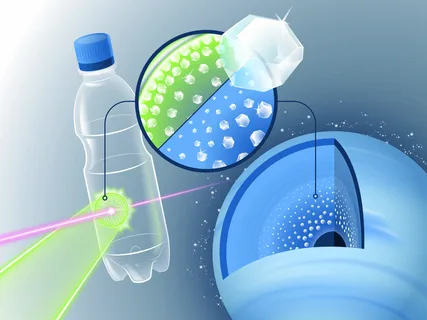Researchers at Rice University have developed a low-emissions method to extract hydrogen and graphene from waste plastics. This innovative approach not only addresses the environmental issues associated with plastic pollution and greenhouse gas emissions but also has the potential to offset the production costs of hydrogen through the sale of graphene, a valuable byproduct.
Hydrogen is a versatile energy source that can power vehicles, generate electricity, and provide heating for homes and businesses. Compared to fossil fuels, hydrogen has a higher energy content per unit of weight, making it an attractive option from an environmental perspective. The primary method of synthesizing hydrogen is through steam-methane reforming, which produces significant amounts of carbon dioxide. Green hydrogen, produced using renewable energy sources to split water into its component elements, is a greener alternative but comes at a higher cost.
The research team from Rice University has developed a catalyst-free method to extract hydrogen and graphene from waste plastics, which could potentially make the production of clean hydrogen economically viable. The researchers were able to convert various types of waste plastics, including mixed plastics that were not sorted or washed, into hydrogen gas and high-value graphene. Even if the graphene is sold at just 5% of the current market value, the clean hydrogen produced could be obtained for free.
The conventional method of steam-methane reforming uses high-temperature steam to produce hydrogen from methane sources such as natural gas. However, this process generates a large amount of carbon dioxide, resulting in the production of “gray” hydrogen. With the anticipated increase in demand for hydrogen, alternative and more sustainable methods are required to achieve the goal of reaching net-zero emissions by 2050.
In the research study, the scientists exposed waste plastics to rapid flash Joule heating for a brief period, which vaporized the hydrogen present in the plastic and left behind graphene, a lightweight and durable material consisting of a single layer of carbon atoms. Graphene has various applications, including electronics, energy storage, sensors, coatings, composites, and biomedical devices.
By analyzing the vaporized contents, the researchers confirmed that the process indeed produced hydrogen gas. They were able to recover up to 68% of the atomic hydrogen present in the plastic with a purity of 94%. The researchers conducted a life-cycle assessment and found that their method resulted in lower emissions compared to other hydrogen production methods. Life-cycle assessment is a comprehensive approach used to evaluate the environmental impacts and resource requirements of various production processes.
One of the advantages of the flash Joule heating process is that it does not require the waste plastic to be washed or separated, enabling the production of cost-effective clean hydrogen from waste materials. The researchers aim to further understand the mechanism behind flash Joule heating to optimize hydrogen production and improve scalability.
Lead author Kevin Wyss believes that this research could contribute to the production of clean hydrogen from waste plastics, potentially addressing significant environmental challenges such as plastic pollution and greenhouse gas-intensive hydrogen production through steam-methane reforming.
Note:
- Source: Coherent Market Insights, Public sources, Desk research
- We have leveraged AI tools to mine information and compile it



